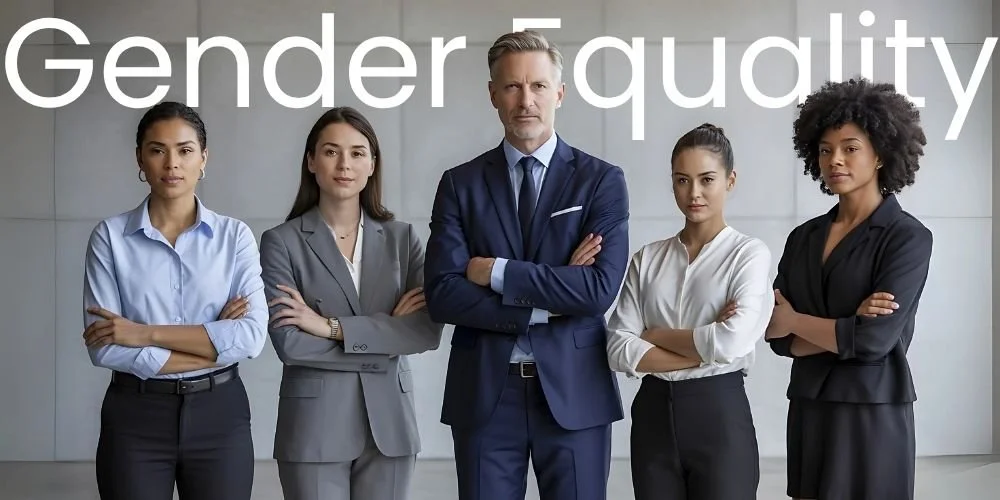Why We Need Male Champions for Gender Equality?
In Episode 9 of Talent Talk, I sat down with David Hawkins, Chair and Managing Director, BASF Australia and New Zealand, a courageous male leader who is using his voice—and his position—to advocate for gender equality in the workplace. And it wasn’t just about optics. It was about ownership.
This five-part blog series unpacks the key moments and takeaways from our conversation, and in this first post, I want to focus on the why: Why does it matter that men show up as champions of gender equity?
🎧 Listen to the full episode: Talent Talk – Episode 9: Men Championing Gender Equality
The Equity Gap Is Still Real
Let’s be honest. Gender equity is still far from reality. Yes, we’ve made progress. But women—especially women of colour—remain underrepresented in leadership, underpaid compared to male counterparts, and overburdened by the invisible labor of inclusion.
In the episode, David Hawkins, Chair and Managing Director, BASF Australia and New Zealand, shared a moment of realisation when he looked around a leadership table and noticed something glaring: almost every seat was filled by someone who looked like him.
“That was the wake-up call,” he said. “If I’m not using my privilege to make space, then I’m reinforcing the system.”
That self-awareness is powerful. But it’s not enough. What we need is action.
Why Male Allyship Matters
Men still hold the majority of leadership roles in most industries. That means they have the power to either accelerate or block change.
When men step up as allies and sponsors:
Decisions get more inclusive
Women’s contributions get amplified
Cultures shift from performative to transformative
In the episode, we talked about what allyship actually looks like. It’s not just saying “I support women.” It’s about demonstrating that support in meetings, hiring, promotions, and everyday behaviours.
5 Ways Male Leaders Can Champion Gender Equality
If you’re wondering where to begin—or how to do better—here are five strategies drawn directly from our podcast discussion:
1. Start With Listening
Before acting, listen. Really listen. Not to fix or defend, but to understand.
“I started by asking women I work with about their experiences,” David shared. “I was shocked by how different our realities were.”
That awareness is the foundation for empathy—and for change.
2. Learn the Language
Understanding concepts like unconscious bias, intersectionality, and sponsorship helps leaders show up more intentionally. Don’t wait for a workshop—seek out the knowledge yourself.
3. Speak Up When It’s Uncomfortable
Whether it’s calling out a sexist joke or interrupting biased assumptions in meetings, use your voice to disrupt exclusion. Silence is complicity.
4. Share the Stage
Look at who’s getting visibility in your organization. Make room for women’s voices in panels, meetings, stretch projects, and high-stakes work.
“I stopped being the one always presenting,” David said. “I started saying, ‘You should hear from her.’ That small shift changed perceptions.”
5. Hold Other Men Accountable
Being an ally isn’t about being the hero—it’s about raising the bar. Set the expectation that inclusion is everyone’s responsibility.
Andrea’s Insight: This Isn’t About Guilt—It’s About Growth
When I work with male leaders, I often hear the fear of “getting it wrong.” The truth is—you will. We all do. The goal isn’t perfection. It’s progress.
Allyship isn’t about guilt. It’s about using your platform to make things more equitable. And when men model inclusive leadership, it gives permission for others to follow.
“I realised that if I waited to be perfect, I’d never start,” David said. “So I just began. I listened. I learned. I spoke up.”
That’s the kind of leadership we need right now.
Let’s Normalise Male Allyship
One of the most powerful outcomes of this episode was the reminder that male allyship shouldn’t be rare or celebrated—it should be normalised.
When male leaders commit to this work:
Teams become more inclusive
Performance improves
Innovation increases
Retention of women leaders grows
And here’s the best part: this isn’t just about women benefiting. It’s about creating better workplaces for everyone.
Final Thought: The First Step Is Yours
If you’re a male leader reading this and feeling unsure—start small. Ask a female colleague about her experience. Reflect on who you promote. Speak up once this week.
Because allyship isn’t a title. It’s a series of choices. And the first one is yours.
📥 Want to deepen your allyship journey? Explore our inclusive leadership coaching at The Career Establishment.

